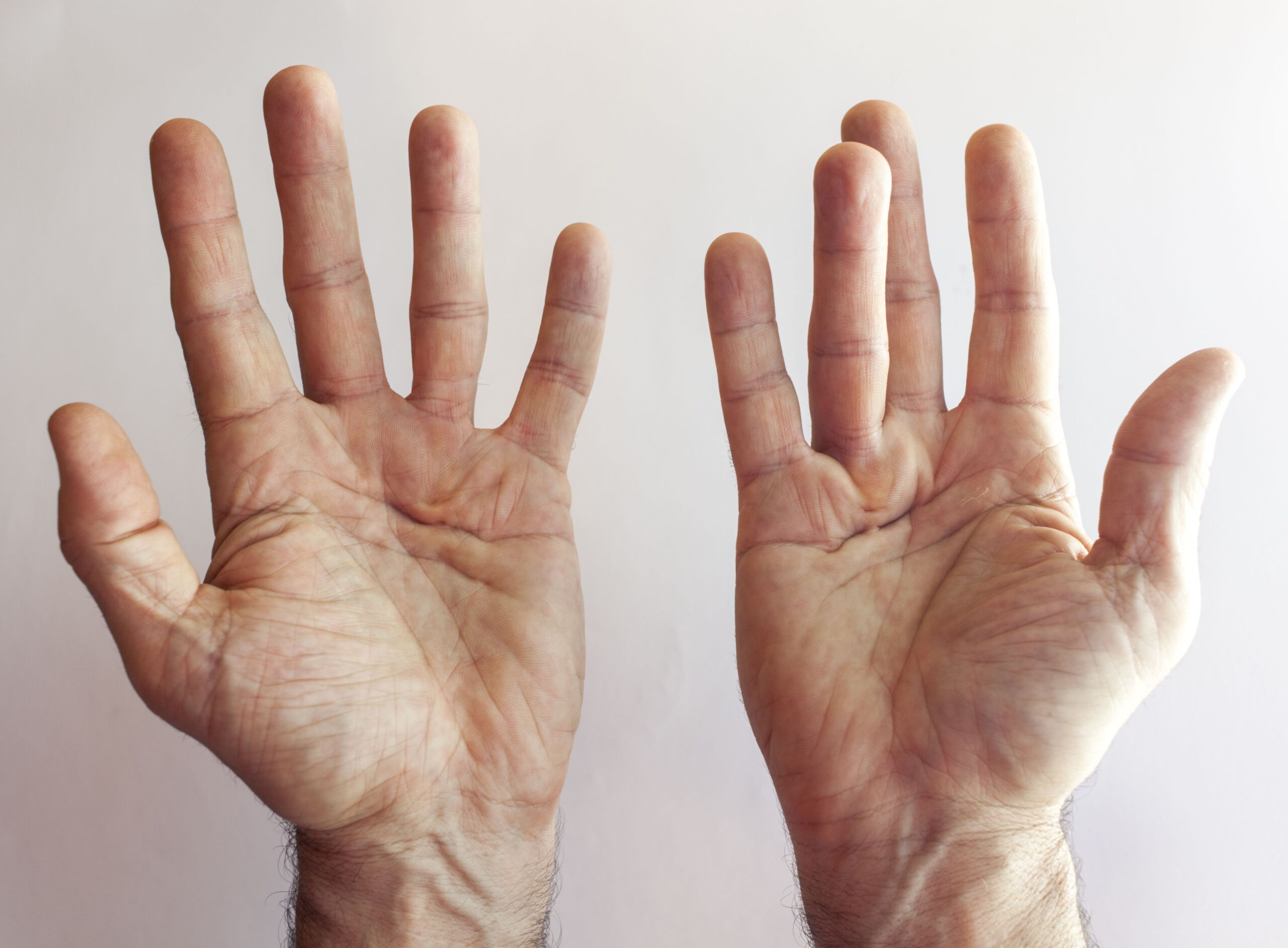What is Dupuytren's disease?
Under the skin on the palm of the hand lies a layer of connective tissue, the so-called palmar aponeurosis, which serves to anchor the skin. Dupuytren’s disease causes a nodular and/or cord-like thickening of this layer due to an increase in connective tissue cells (myofibroblasts). The strands can extend over the entire palm of the hand up to the finger joints and slowly contract as they progress. They lead to a flexed position of the affected fingers and prevent them from being fully extended. These changes do not disappear spontaneously. The little finger is most frequently affected, followed by the ring finger and thumb. The disease often occurs on both sides and usually between the ages of 40 and 60. Men are affected much more frequently than women.

What are the causes of Dupuytren's disease?
The exact cause of this benign disease is not known. A familial clustering can be observed and there is a connection to diabetes.
What are the symptoms of Dupuytren's disease?
Patients usually notice the lumps and strands in the palm of the hand themselves. There is usually no pain. However, the increasing inability to stretch the fingers is perceived as a nuisance in everyday life and is the most common reason why those affected consult a doctor. The disease usually progresses slowly, but there are also more aggressive courses. These mainly affect younger patients (< 40 years) with bilateral involvement, similar changes on the feet (Ledderhose disease) and a family history.
What are the treatment options?
The aim of the treatment is to reverse or stop the flexion deformity of the fingers as far as possible and thus improve hand function again.
